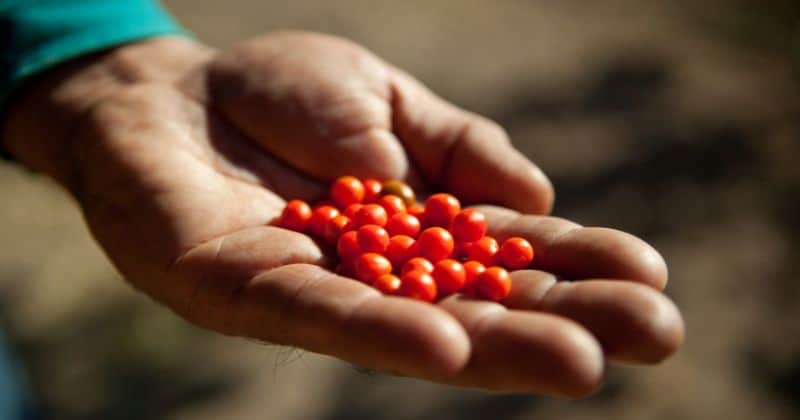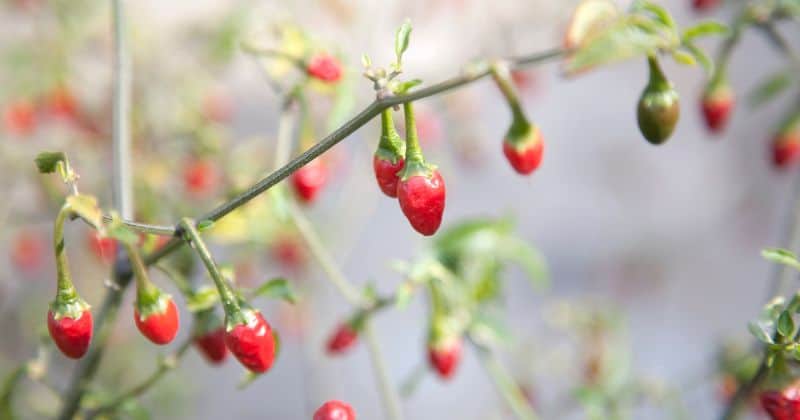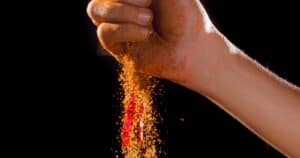Chile peppers come in all shapes, sizes, and heat levels. Two of the most popular spicy varieties used in Mexican cuisine are chiltepin and pequin peppers. But what is the difference between these two peppers? Which one is hotter – chiltepin or pequin?
The main distinctions between chiltepin and pequin peppers come down to three key factors:
- Heat level – Chiltepins are hotter, rating 50,000 to 100,000 Scoville units compared to 40,000 to 60,000 for pequin peppers.
- Flavor – While both offer fruity, smoky flavors, chiltepins tend to taste more earthy while pequins have more citrusy brightness.
- Origins – Chiltepins are native to the American Southwest and northern Mexico. Pequins originate from southern Mexico.
So in summary, chiltepin peppers pack more heat while maintaining a complex, smoky flavor profile. Pequin peppers trade off a bit of spiciness for more pronounced fruity, citrusy notes. But both are staple ingredients in Mexican cuisine.
The rest of this in-depth article will uncover more about the characteristics, uses, and how to cook with these two delicious peppers. Read on to become a chiltepin vs. pequin expert!
An Overview of Chiltepin Peppers

Chiltepin peppers, also known as chile tepin or bird’s eye chilis, are a prized ingredient in Mexican and Tex-Mex cooking. These chilies have quite a few unique traits:
Size and Shape
- Chiltepins are diminutive, usually less than 1 cm wide. They have a spherical to oval shape.
Heat Level
- On the Scoville scale, chiltepins register an impressive 50,000 to 100,000 SHU. This makes them twice as hot as cayenne!
Flavor Profile
- Beyond heat, chiltepins offer a complex flavor profile with sweet, smoky, and citrusy notes.
Origins and Uses
- Chiltepins are native to northern Mexico and the southwestern United States. They have a long history of use by Native American groups like the Yaqui.
- Today, they’re frequently used in salsas or dried and ground into seasoning blends.
An Overview of Pequin Peppers

Pequin peppers are another Mexican chili gaining popularity worldwide. Here are some key traits of these hot little peppers:
Size and Shape
- Compared to chiltepins, pequin peppers are slightly larger, around 1 cm long. They have an elongated, pointed shape.
Heat Level
- Pequins register 40,000 to 60,000 SHU, making them moderately hot but less spicy than chiltepins. They’re hotter than cayenne but milder than habaneros.
Flavor Profile
- These chilies have a bright, citrusy flavor. They tend to taste fruitier and smokier than chiltepins.
Origins and Uses
- Pequin peppers hail from the Tabasco region of Mexico. They’re a key ingredient in sauces like Cholula.
- Pequins are popularly used fresh or dried in salsas, marinades, and
spice blends.
How Do Chiltepin and Pequin Peppers Differ?
Now that you know the basics, let’s directly compare some key differences between chiltepin vs pequin peppers.
Heat Level
One of the biggest differences between chile pequin vs chiltepin peppers is their level of spiciness. Chiltepins clock in at 50,000 to 100,000 SHU, while pequins are generally 40,000 to 60,000 SHU. So chiltepins have the upper hand when it comes to heat! Both are spicier than jalapeños though.
Flavor Profile
While both offer some fruity, smoky notes, chiltepins tend to taste more earthy and pequin more citrusy. Pequins also exhibit a stronger fruitiness and natural sweetness compared to chiltepins.
Size and Shape
On average, pequin peppers are slightly larger and longer than the more rounded chiltepins. But there’s definitely overlap in their size ranges – don’t rely on looks alone to tell these two popular peppers apart!
Origins
Chiltepins are native to northern Mexico and the American Southwest, while pequin peppers originate from southern Mexico. But today, both are grown and used worldwide.
Rarity
Of the two, chiltepins tend to be harder to find fresh. Pequin peppers have become more widely available with their commercial popularity. For chiltepins, your best bet is finding them in their native regions or dried.
Uses
Both chiltepins and pequin peppers are extremely versatile! They can be used fresh or dried for salsas, marinades, rubs, sprinkled onto food as a condiment, or infused into oils and vinegars. Pequins are especially beloved in Mexican table sauces like Cholula.
How to Choose Between Chiltepin and Pequin
So when it comes to deciding between these two hot peppers for your kitchen, which should you choose?
If You Want More Heat
Go with chiltepins! Their higher Scoville range makes them slightly hotter than pequin peppers.
If You Prefer Milder Heat and More Fruity Notes
Pequins offer a nice moderate heat along with bright, tropical fruitiness. Their flavor profile works especially well in condiments and sauces.
If You Can Find Them Fresh
Try both! Fresh chiltepins and pequins offer delightful, complex flavors that complement many dishes.
If You Only Have Access to Dried
You still can’t go wrong! Both dried chiltepins and pequin peppers provide an easy way to add heat and smoky undertones to your cooking.
If You Want an Heirloom Pepper Grown in the Americas
Chiltepins are the way to go. They have a proud tradition as North America’s only native chili pepper.
If You Need Lots of Peppers for Commercial Use
Pequins are more commonly grown commercially nowadays and available in bulk.
How to Cook with Chiltepins and Pequins
Now that you’re inspired to try these peppers, here are some delicious ways to use them:
Salsas and Hot Sauces
Add fresh or dried chiltepins and pequins to your favorite salsa recipe for extra zing. Or create a custom hot sauce showcasing one variety.
Marinades and Rubs
Include dried, ground chiltepins or pequins in homemade marinades, dry rubs, and
Enhancing Dishes
Add freshly chopped peppers or chili flakes at the end to jazz up tacos, soups, eggs, rice, beans, sandwiches, and more.
Infused Oils and Vinegars
Steep dried chilies in oil or vinegar for a few weeks to create a flavored condiment. Use for vinaigrettes, dipping, and drizzling.
Jams and Jellies
For an unexpected treat, blend pureed pequins or chiltepins into sweet jams and jellies. Spread on toast, swirl into peanut butter, or pair with cheese.
Everyday Seasoning
Keep a shaker of crushed dried chiltepins or pequins on hand for an instant dash of heat and smoky depth.
The Verdict: Chile Pequin vs Chiltepin
While pequin and chiltepin peppers share many similarities, chiltepins take the edge for their signature level of heat, complex flavor, and native roots. But pequins deserve space in the pantry too for their fruity taste and Scoville heat that’s still bolder than many chilies.
The most important takeaway? There’s really no wrong choice between chiltepin and pequin! Both are extremely versatile peppers that add intrigue to any dish they flavor. Whether you’re looking for mild, moderate, or extreme heat or craving some sweet and smoky notes, you can’t go wrong cooking with these Mexican chili stalwarts.






